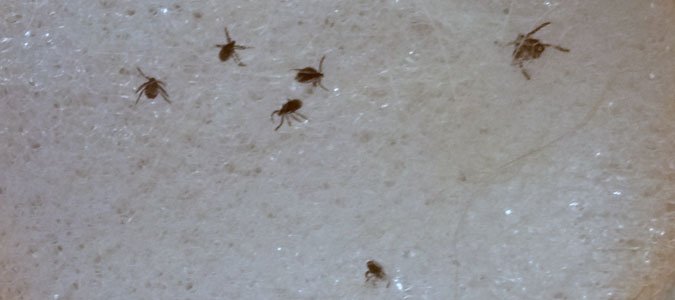Be sure to read Whole Dog Journal‘s in-depth feature on ticks and Lyme disease if you haven’t already.
This is the most trying time of the year for walking my dogs off-leash. On March 15 each year, the rules change for my favorite place to walk dogs, and only leashed dogs are allowed, until the end of June, for the bird nesting season. Rather than walk three dogs on leash – something I “can”do but don’t enjoy – I switch to another nearby area where dogs are allowed off-leash year round. But in this particular area, oh my goodness, the ticks abound.
I could forgo our off-leash walks for the months when the tick-free area where I walk the dogs the rest of the year is restricted to leashed dogs. But because we are able to walk off-leash so much of the time, my dogs (especially Otto) seem to really miss the joys of leash-free walks: being able to run ahead and run back, stop and really smell something very deeply, running to catch up if sniffing took a long time, stopping in mid-stride from time to time to stare at something or (again) smell the air for faint scents of wild animals or other walkers. After a leash-free walk, they sleep harder and longer, and their behavior is better for more days afterward.
The relatively large American Dog Tick is one problem; the tiny deer tick is another thing altogether, especially when they are crawling through my dog Otto’s abundant, long hair. Even though I use monthly applications of Frontline at this time of year, after a walk on the trail in this area, I have to spend at least an hour going through Otto’s coat with a Furminator (his undercoat is shedding, so this helps that task, too) and then a flea comb, catching ticks in the tight tines of the combs, and dropping them into a glass of soapy water.

I start at Otto’s head and work down each leg. I look between his toes for grass awns – and find a tiny tick crawling between the toes of one front foot. I work backward, finding fewer ticks on his rear end; they seem to always migrate in the direction of his head, and tend to bite him (if I fail to locate them) on his neck and behind his ears. If, after going over him from nose to tail, I can comb for five or ten minutes without finding another tick, I call it quits. Tonight, after a two-hour, leisurely hike with the dogs and my husband, it took me an hour to accomplish tick-free combing.
It’s five times as bad if I haven’t put Frontline on him for over a month.
Some of you are horrified at the prospect of using a spot-on pesticide on your dog. You must not live in or walk in a tick-infested area. Or know anyone with a dog who suffered from any of the tick-borne diseases: Lyme, anaplasmosis, erlichiosis, babesiosis, or Rocky Mountain spotted fever.

None of my dogs have ever had a bad reaction to Frontline, though my son’s dog, Cole, had a very bad reaction (with vomiting, diarrhea, and a loss of appetite for a couple of days) to Advantix.
I’ve tried a variety of home-prepared remedies that are supposed to repel ticks, such as sprays that contain essential oils; the most commonly mentioned is rose geranium oil. I’ve not seen any reduction in the number of ticks on my dog when using only essential oil-based preparations. I’m sticking with Frontline for now.
What works for keeping ticks off your dogs?






Frontline doesn’t work for my dog’s tick problem. The one that seems to work the best to me is Certifect. While on Certifect I only see a couple of ticks here & there but that’s about it. I tried Frontline Plus and my dog had ticks everywhere still. It seemed like I didn’t even treat them with anything while on Frontline.
My dog does not have Rocky Mountain Tick Fever, but I have had it. Does anyone know of any natural remedies to get it out of your system? Thanks!